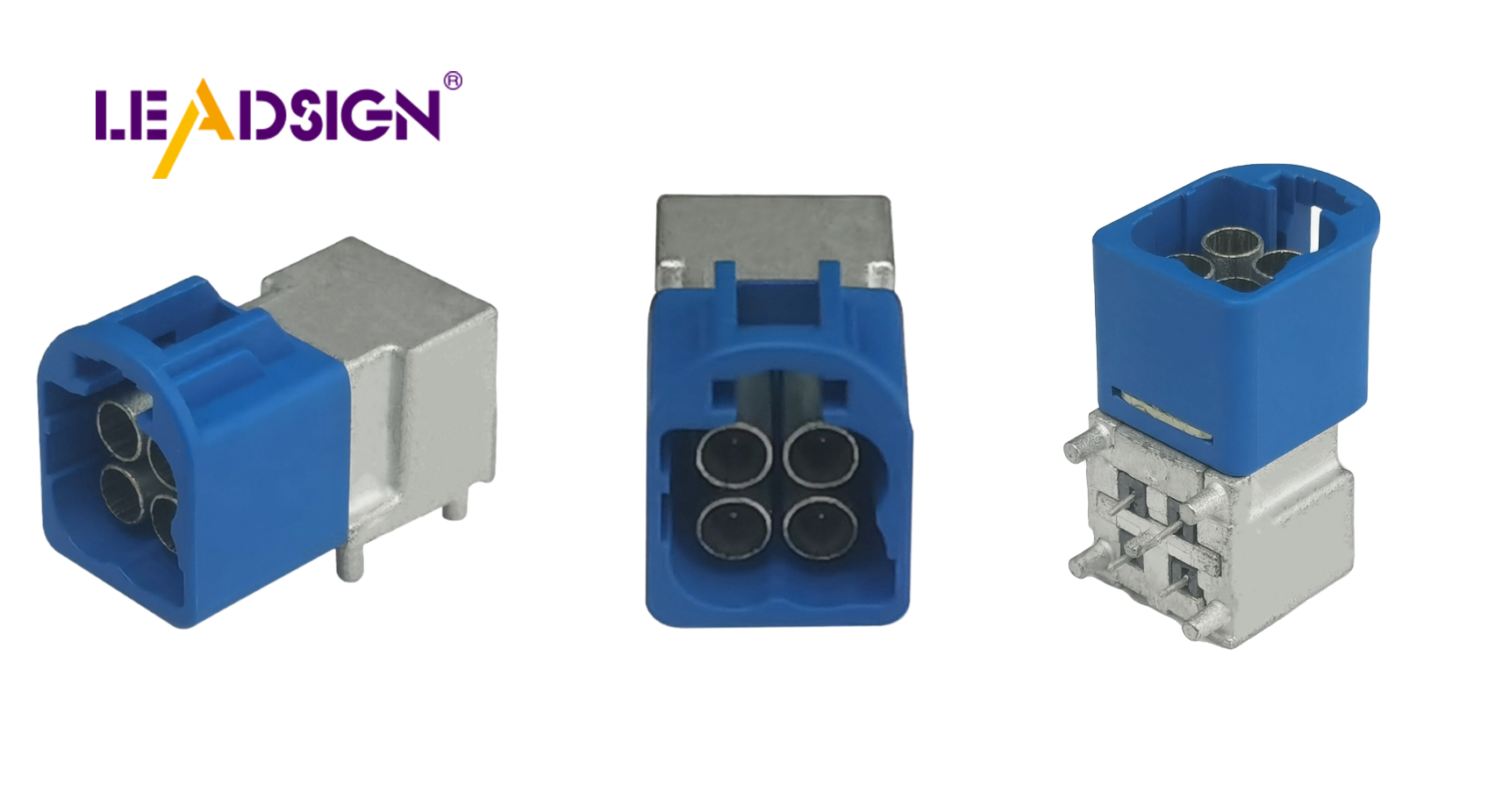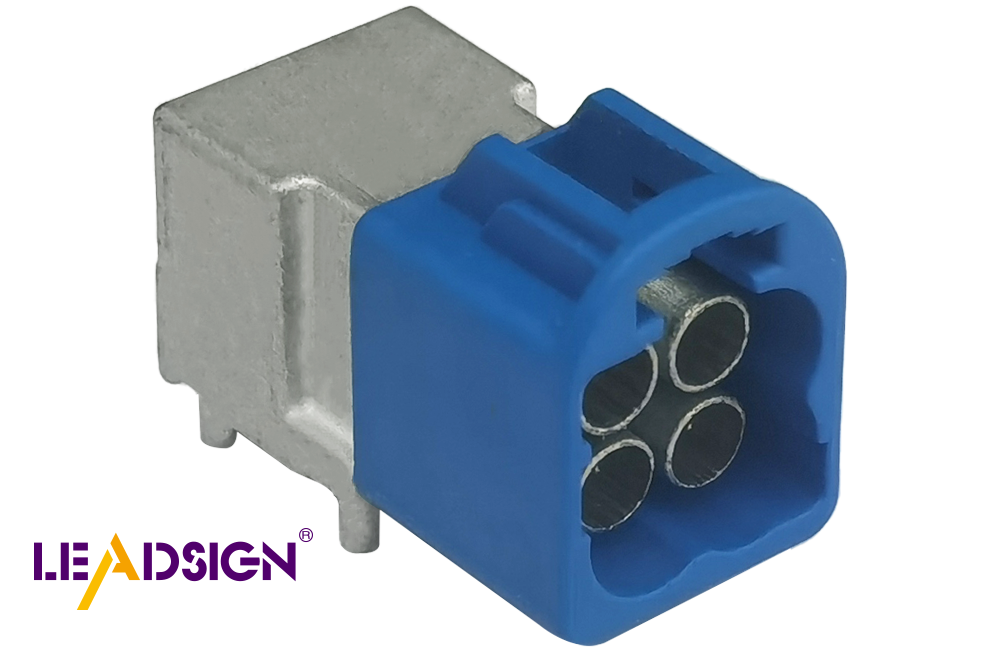Understanding Automotive Wiring Connector Types

Automotive electrical connectors types are crucial in modern vehicles. They facilitate seamless communication between various components, enhancing the car's performance and reliability. These connectors ensure the safety of electrical systems by providing robust connections. Their design helps prevent issues, which can vary depending on the type and exposure to heat. High-quality connectors prevent car problems, ensuring safety and optimal functionality. Understanding these connector types aids in selecting the right one for each application, thereby improving the car's efficiency and longevity.
Automotive Electrical Connectors Types

Knowing about different automotive electrical connectors types is important for cars to work well. Each type has a special job and offers good and bad points. Let's look at some common connector types in cars.
Blade Connectors
Characteristics and Applications
Blade connectors, also called spade connectors, have a flat metal piece that fits into a slot. They are used a lot in cars because they are simple and easy to use. These connectors connect wires to things like switches and relays. They allow quick connections, which is useful where maintenance happens often.
Advantages and Disadvantages
Blade connectors have several good points:
Ease of Use: Easy to connect or disconnect.
Versatility: Works for many uses.
But they also have downsides:
Limited Current Capacity: Not good for high power.
Potential for Loose Connections: Can loosen over time if not tight.
Pin Connectors
Characteristics and Applications
Pin connectors have pins that fit into sockets. They are used in cars for sensors and control modules. These connectors give a strong connection, even with vibrations.
Advantages and Disadvantages
Pin connectors offer these benefits:
Secure Connection: Pins fit tightly, less chance of disconnection.
Durability: Made to handle shaking.
However, pin connectors can be tricky:
Complexity: Harder to install than blade ones.
Cost: Usually more costly due to design.
Butt Connectors
Characteristics and Applications
Butt connectors are tube-shaped used to join two wires end-to-end. They are often used in car wiring fixes or changes. These ensure wires stay connected by crimping them together.
Advantages and Disadvantages
Butt connectors have these advantages:
Strong Connection: Crimping keeps wires tightly joined.
Protection: Often insulated against short circuits.
Yet they also have drawbacks:
Permanent Connection: Hard to undo once crimped.
Requires Tools: Need tools for installation.
Learning about these automotive electrical connectors types helps pick the right one for each job, making car systems reliable and efficient.
Ring and Spade Connectors
Characteristics and Applications
Ring and spade connectors are important for car electrical systems. These connectors, part of automotive electrical connector types, give strong connections. Ring connectors have a round end that fits over a bolt or screw, holding tight. They are used for grounding and battery links. Spade connectors look like forks, making them easy to attach and remove. They are used where quick disconnection is needed, like in fuse boxes.
Both ring and spade connectors protect well from the environment. They handle heat and moisture, good for tough car places. Their design stops interference, keeping electricity steady. These connectors keep car circuits working well.
Advantages and Disadvantages
Ring and spade connectors have many benefits:
Secure Connection: Ring connectors stay firm even with shaking.
Ease of Use: Spade connectors can be removed quickly without tools.
Durability: Both resist rust and heat, lasting long.
But they also have downsides:
Limited Flexibility: Ring ones need full bolt removal to disconnect.
Potential for Looseness: Spade ones might get loose if not tight enough.
Knowing these traits helps pick the right connector for each job. Choosing well from automotive electrical connector types makes car systems work better. Using these right ensures cars run safely for a long time.
Things to Think About When Picking Connectors
Choosing the right connector for cars needs knowing some important things. These help make sure connectors fit the car's electrical needs, making them work better and last longer.
Electrical Needs
Power and Voltage Levels
When picking connectors, it's key to check their power and voltage levels. These show how much electricity the connector can safely handle. For example, strong connectors are needed for charging batteries. They keep the system working well without getting too hot or breaking. Choosing connectors with the right levels stops problems and keeps circuits safe.
Weather Conditions
Connectors must handle different weather like heat, wetness, and rust. Car connectors often have designs that protect against these issues. They might have seals to stop water from getting in, helping them last longer. By choosing connectors with good weather protection, you can make car systems more durable and reliable.
Physical Needs
Strength and Material
Connector strength depends a lot on what they're made of. Good materials don't wear out fast, keeping connectors working over time. For instance, strong materials let connectors be unplugged often without breaking down. This strength is important for keeping connections steady in cars where shaking happens a lot.
Size and Fit
Size and fit matter when picking connectors too. The connector should fit into the system easily without causing trouble. A good fit means it works well with other parts smoothly. Also, the size should match the space in the car design. Right sizing stops fitting problems and helps the connector work right.
By thinking about these things, people can pick better connectors for cars. This careful choice makes car systems work better and safer.
Common Uses in Car Systems
Engine and Power Parts
Connectors Used
Connectors are key in engine and power parts. They link sensors and control units for smooth work. Common ones are pin connectors and blade connectors. Pin connectors hold sensors tight, while blade ones make easy links for switches.
Importance in System Work
Connectors affect how the engine works. They send data between parts to keep the engine running well. A strong link stops signal loss, keeping things working right. Automotive electrical connectors guard against heat and rust, making them last longer. This keeps engines working well, even when it's tough outside.
Lights and Electric Parts
Connectors Used
Car lights and electric parts need different connectors to work right. Butt connectors and ring connectors are often used here. Butt connectors join wires securely end-to-end. Ring ones, with round ends, help with grounding and battery links.
Importance in System Work
Connectors keep car lights safe and working well. They hold a steady electric link to stop flickering or failures. Self-cleaning contacts and seals stop water from messing up connections. This is vital for safety features like brakes where signals must stay strong. Good quality connectors help cars run safely by keeping electric systems steady.
Choosing the right connector is very important. It helps cars work well and not break down. Picking the right one stops electrical problems and makes cars run better. As tech gets better, connectors get stronger and work better too. New things like 3D printing help make connectors last longer in many places, like in cars. These new ideas give us stronger parts so cars stay safe and work well. Knowing about these changes helps people choose wisely. This keeps their cars safe and lasting a long time.
See Also
Exploring HSD Connectors in Automotive Sector
Significance of Fakra Connectors in Contemporary Cars
Navigating Ford Fakra Connectors

